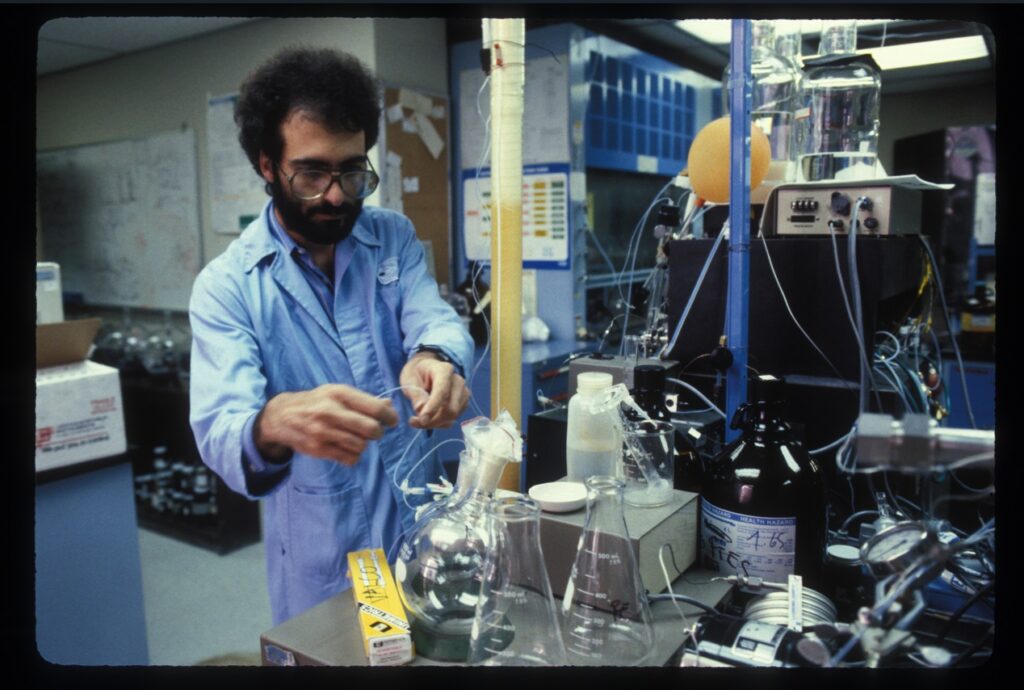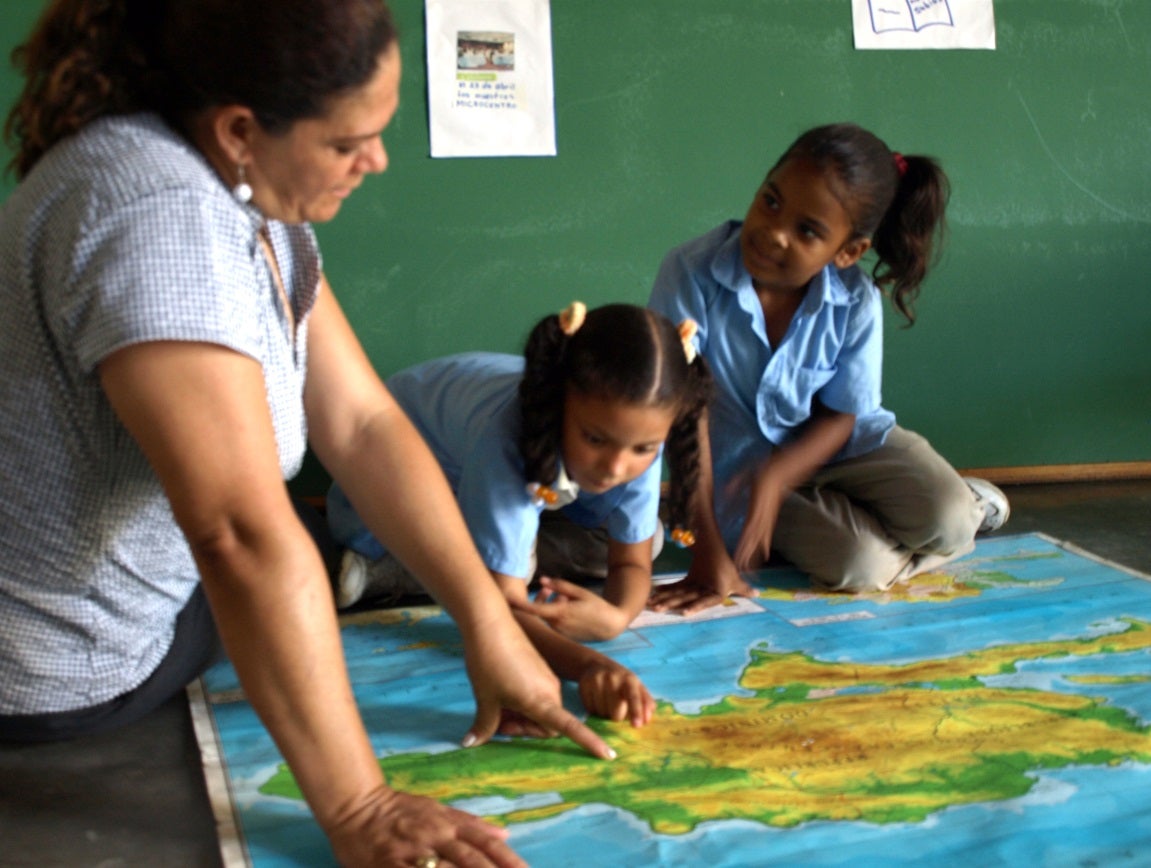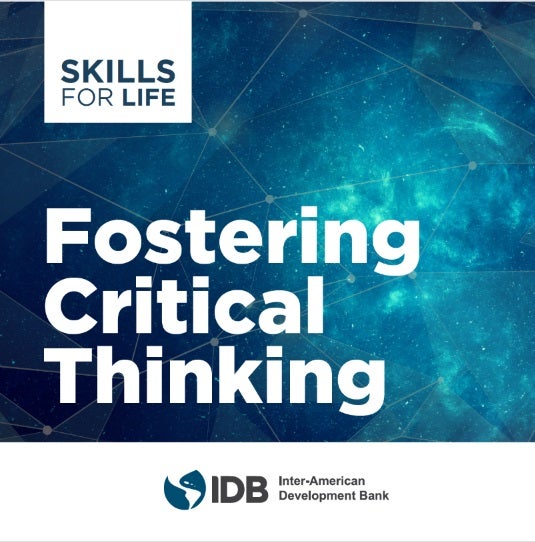Thinking is a natural act for human beings. Every day, we have thousands of thoughts. However, just because we are thinking does not mean we are doing it well or that all our thoughts require critical reasoning because doing so would be too exhausting. Critical thinking becomes a core skill in a world that is changing so dynamically. Thinking critically not only helps with generating a well-founded personal opinion but also helps solve complex problems in many ways.
Given the importance of this skill, the good news is that critical thinking can be exercised and trained. In other words, this 21st-century skill can be intentionally taught. Below, we will explain how.
What Is Critical Thinking?
According to the publication of the brief series Life Skills. Fostering Critical Thinking by the 21st Century Skills Initiative, “critical thinking mainly aims at assessing the strength and appropriateness of a statement, theory, or idea through a questioning and perspective-taking process, which may or may not in turn result in a possibly novel statement or theory.”
Furthermore, in this publication by Stéphan Vincent-Lancrin, it is argued that “critical thinking need not lead to an original position to a problem. The most conventional one may be the most appropriate. However, it typically involves examining and evaluating different possible positions”.
In other words, it is not limited to solving problems after a reflection. It is also about being able and willing to challenge the core assumptions of accepted theories, paradigms, or knowledge.
Critical thinking implies recognizing that other perspectives may also have merit and, therefore, evaluating each argument or theory’s possible strengths, weaknesses, and biases is possible, no matter how unaligned they are with what we think.
Critical thinking involves using logic, reasoning, and creativity to reach conclusions.
Why Is Critical Thinking Important?
Critical thinking is a skill that has applications in practically all aspects of daily life. It can help you make better decisions, improve employability, and better understand the world. In other words, critical thinking is a fundamental skill for being a 21st-century citizen.
What Is Critical Thinking Used For?
Critical thinking has various functionalities in everyday life, whether in fulfilling professional obligations or carrying out personal activities. Thinking critically is used to:
- Make good decisions: it is important as an exercise to analyze and evaluate sources of information based on their truthfulness, relevance, and reasoning, which leads to better decision-making. Ask or question before blindly accepting things as they appear, and form your judgment based on the facts, information, and knowledge available.
- Solve problems: use logic and reasoning to analyze and deconstruct problems and choose the best solutions considering the weaknesses and strengths of each alternative solution.
- Promote creativity: this is one of the main characteristics of critical thinking and is associated with the previous point, by questioning facts, theories, or concepts, space is also opened up which is very useful for developing new solutions to problems.
- Improve employability: especially in the digital age, where many jobs are being automated, there is consensus that critical thinking and creativity are two fundamental skills for improving people’s employment prospects.
- Digital and global citizenship: Critical thinking plays a role in individual well-being, but above all, it is considered an essential pillar of the functioning of modern democracies. The ability to voice an independent and well-founded opinion to vote and weigh the quality of arguments presented in the media and other sources of information. In addition, when misinformation, fallacies, and fake news can be a problem for democratic systems, critical thinking helps prevent the spread of false information. It contributes verified, respectful, and ethical content to digital communities and social networks.

4 Steps to Exercise Critical Thinking
According to the publication on critical thinking, there are four key cognitive processes involved in exercising critical thinking:
1. Inquire
Determining and understanding the problem is an important first dimension of a critical thinking inquisitive process. This sometimes includes asking why the problem is posed in a certain way, examining whether associated solutions or claims can be based on inaccurate facts or reasoning, and identifying knowledge gaps. This inquiry process partly concerns rational thinking (checking facts, observing, and analyzing reasoning). Still, it includes a more ‘critical’ dimension when identifying possible limitations of the solution and questioning some of the underlying assumptions and interpretations, even when the facts are accurate.
2. Imagine
In critical thinking, imagination plays an important role in the mental elaboration of an idea, but all thinking involves some level of imagination. At a higher level, imagination also consists of identifying and reviewing alternative or competing worldviews and theories with an open mind to consider the problem from multiple perspectives.
This allows for a better identification of the strengths and weaknesses of the proposed evidence, arguments, and assumptions, although this evaluation also belongs to the inquisitive process.
3. Create
The product of critical thinking is one’s position or solution to a problem or judgment about others’ positions or solutions. This mainly involves good inference, a balance between different ways of looking at the problem, and, therefore, recognition of its possible complexities.
As with good thinking, critical thinking involves the ability to argue and justify one’s position rationally, with relevant information, under existing perspectives and socially recognized forms of reasoning, or possibly some new ones.
4. Reflect or evaluate
Finally, although one may consider their stance or way of thinking to be superior to some alternatives, perhaps because it encompasses a broader view or is better supported by existing evidence, critical thinking involves some process of self-reflection on the perspective one espouses, It is possible limitations, and uncertainties. Therefore, this type of thinking implies a certain level of humility, as thinking critically also involves openness to competing ideas.
While one should not adopt ancient skepticism and suspend judgment in all cases, sometimes this may be the most appropriate position.
You may also be interested: 4 Benefits of Developing Listening Skills and the Steps to Achieve It
How to Be a Critical Thinker?
Being a critical thinker brings enormous benefits that go beyond the workplace. It is also good for personal development and daily life in the community. So how do you achieve it?
To be a critical thinker you have to exercise other habits and skills, such as fostering curiosity, questioning the established, improving analysis and communication skills, maintaining self-discipline and being alert to cognitive biases.
Let’s review some of the key skills acquired by great critical thinkers:
- Identify relationships between variables and hypothesis testing.
- Master systemic thinking and scientific reasoning.
- Understand the underlying social, natural, and technological relationships in a system.
- Exercise informational literacy, which includes understanding, finding, and obtaining data, reading, interpreting, evaluating, and handling data.
- Avoid cognitive biases; consider all available information, not just what aligns with your point of view.
- Create a strategy, theory, method, or argument based on evidence synthesis.
- Create an argument that goes beyond the available information.
- Computational thinking: for example, abstractions and generalizations of patterns, structured problem decomposition, and iterative thinking.
- Be able to criticize a work product regarding its credibility, relevance, and bias using a set of standards or a specific framework.
These activities to promote critical thinking can be driven at home, at school, or individually.
Teaching Critical Thinking
Although education systems do not usually have a subject specifically dedicated to developing critical thinking, this skill can be developed as part of other learning. Therefore, the publication “Life Skills: Fostering Critical Thinking” develops some strategies for teaching this skill in schools.
Including Critical Thinking in Education
- Use conceptual rubrics that clarify the skills involved.
- Include critical thinking as a learning objective in lesson plans.
- Provide students with tasks and problems that encourage them to question their cognitive abilities and assumptions and explore multiple perspectives.
- Generate an environment in which students feel safe to take risks expressing their thoughts and expressions that arise from their reasoning.
- Assess critical thinking by including it in exams and national assessments.
By fostering these strategies at all educational levels, students can be better prepared for the future with critical thinking skills and improve the quality of their education.
And you, do you consider yourself a critical thinker? How has exercising critical thinking helped you in your life? Check out our blog and discover more content to boost your critical thinking!



Leave a Reply